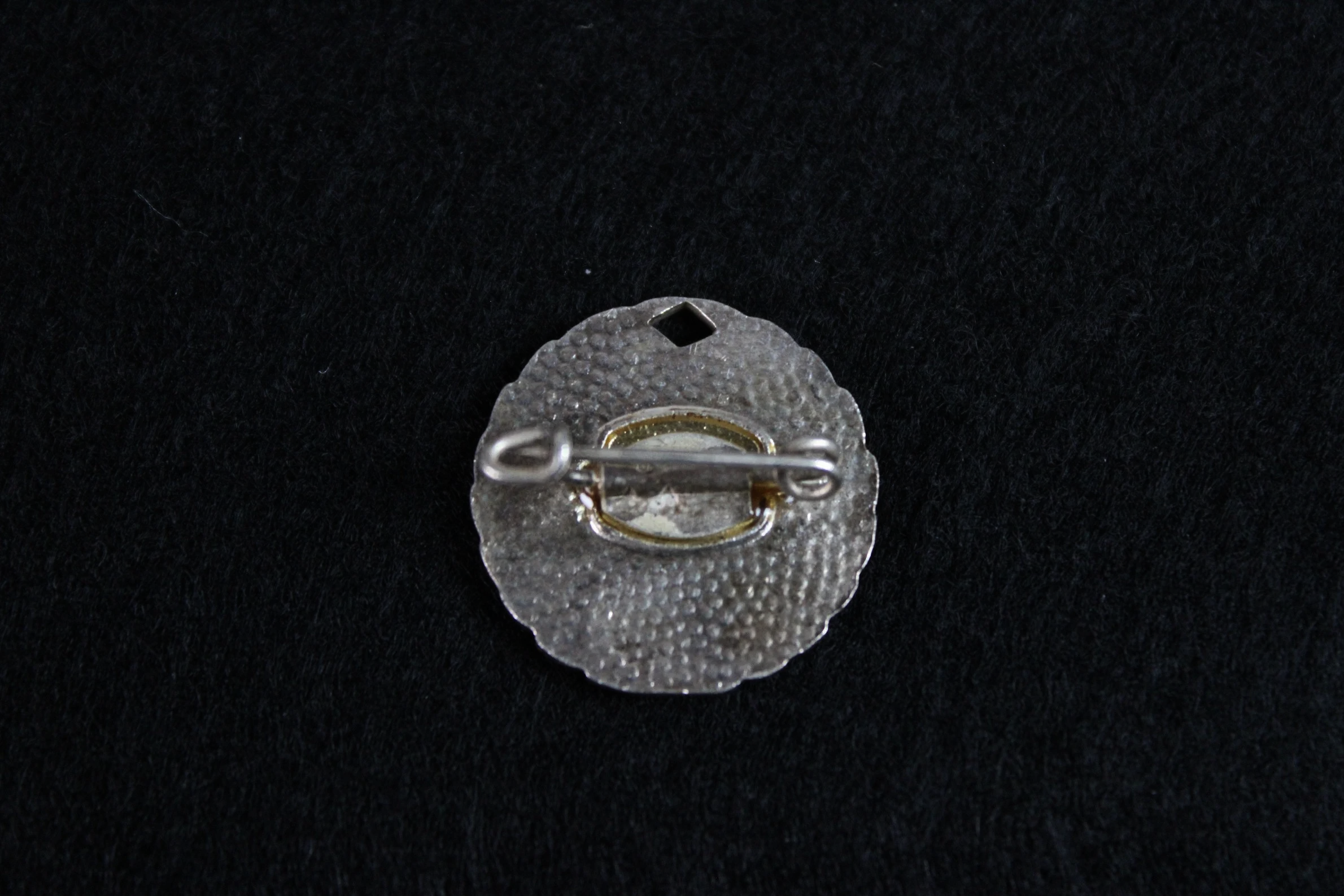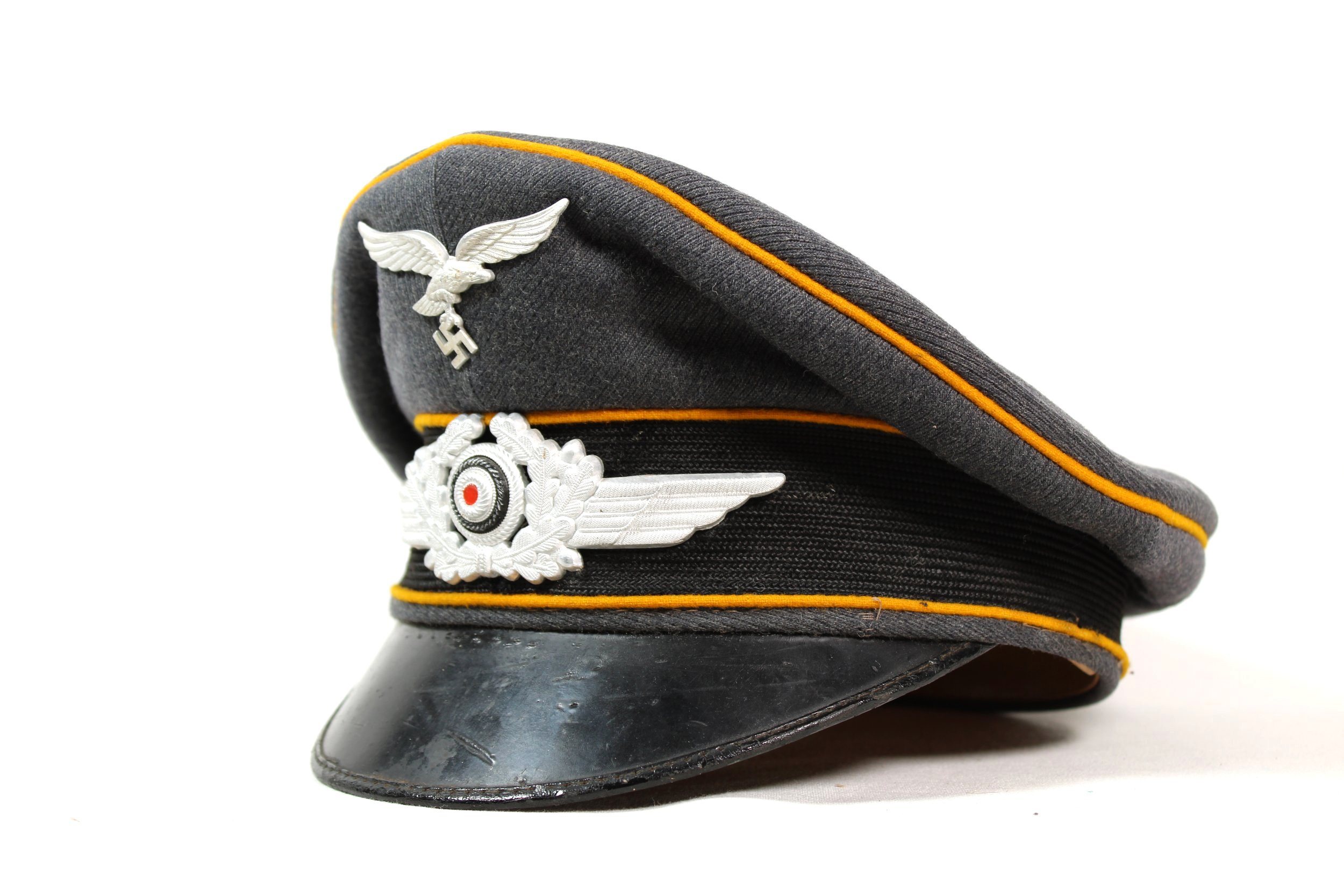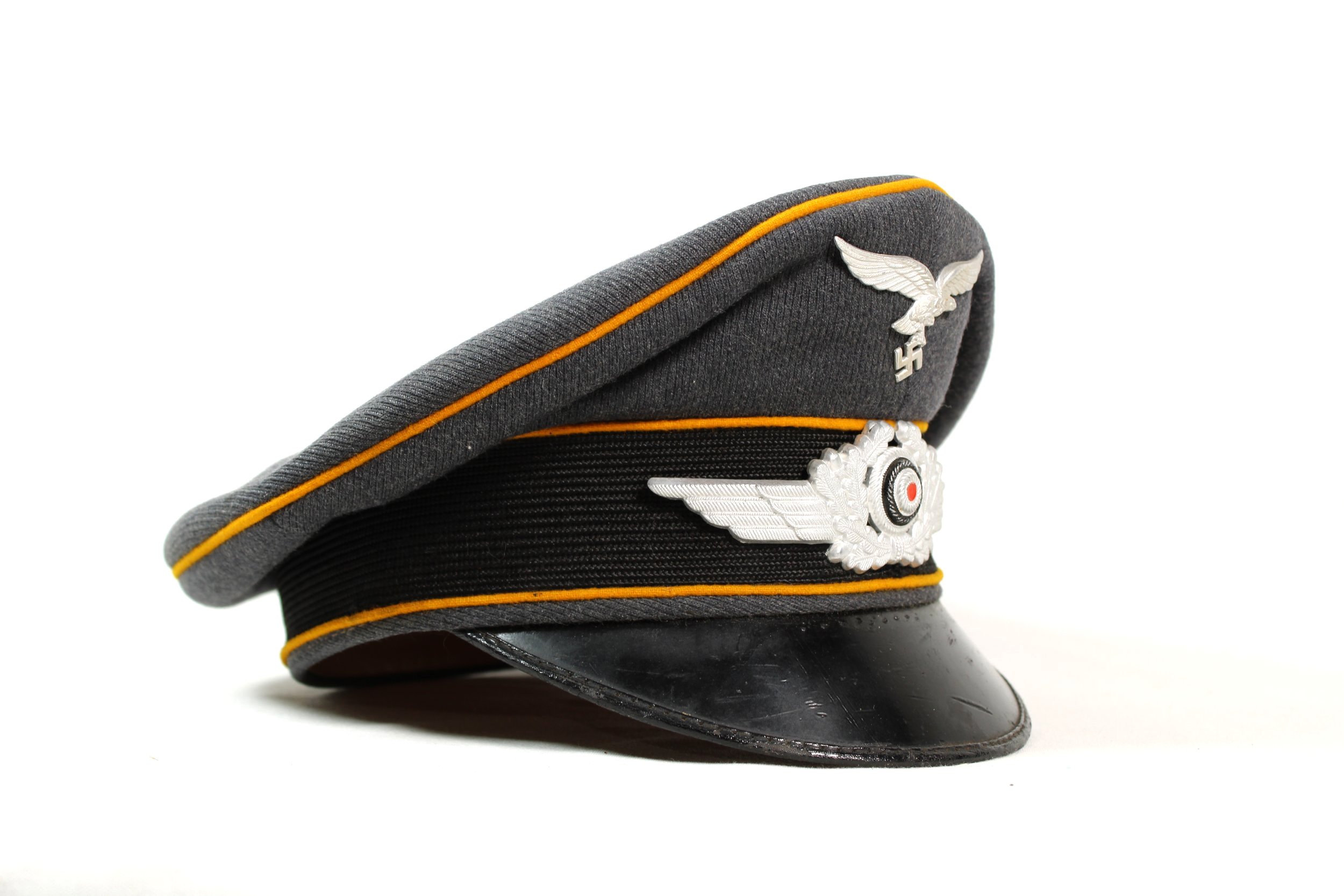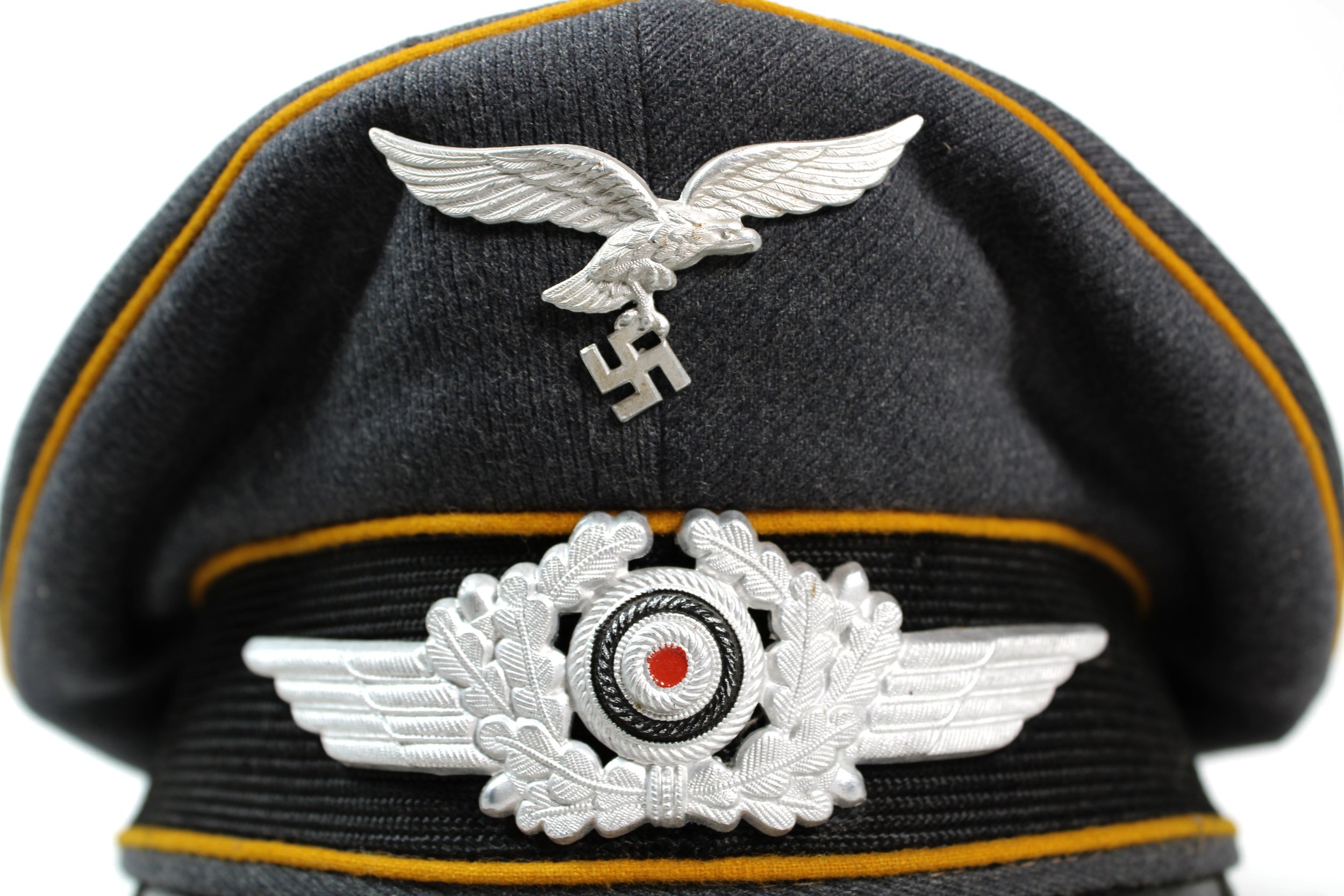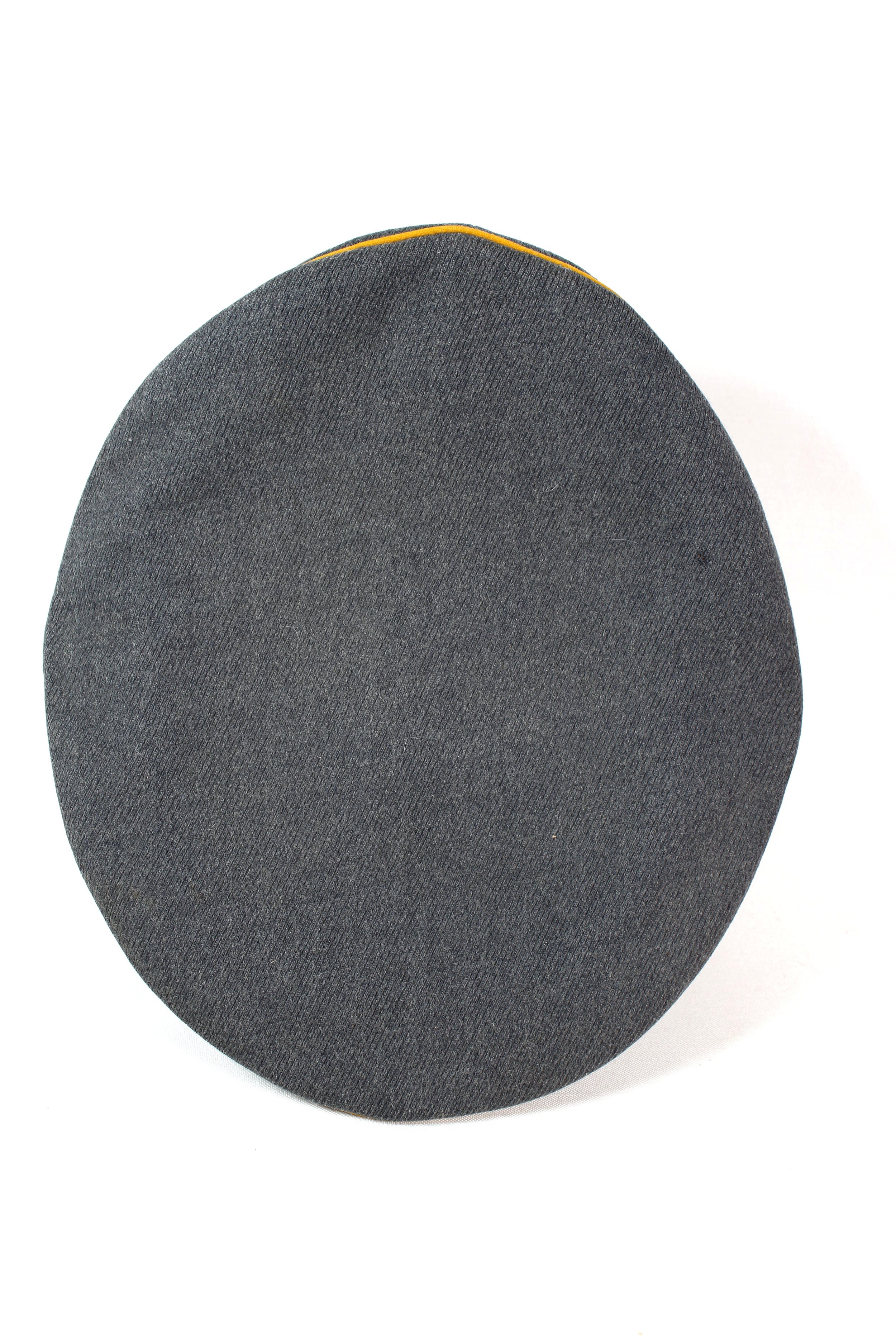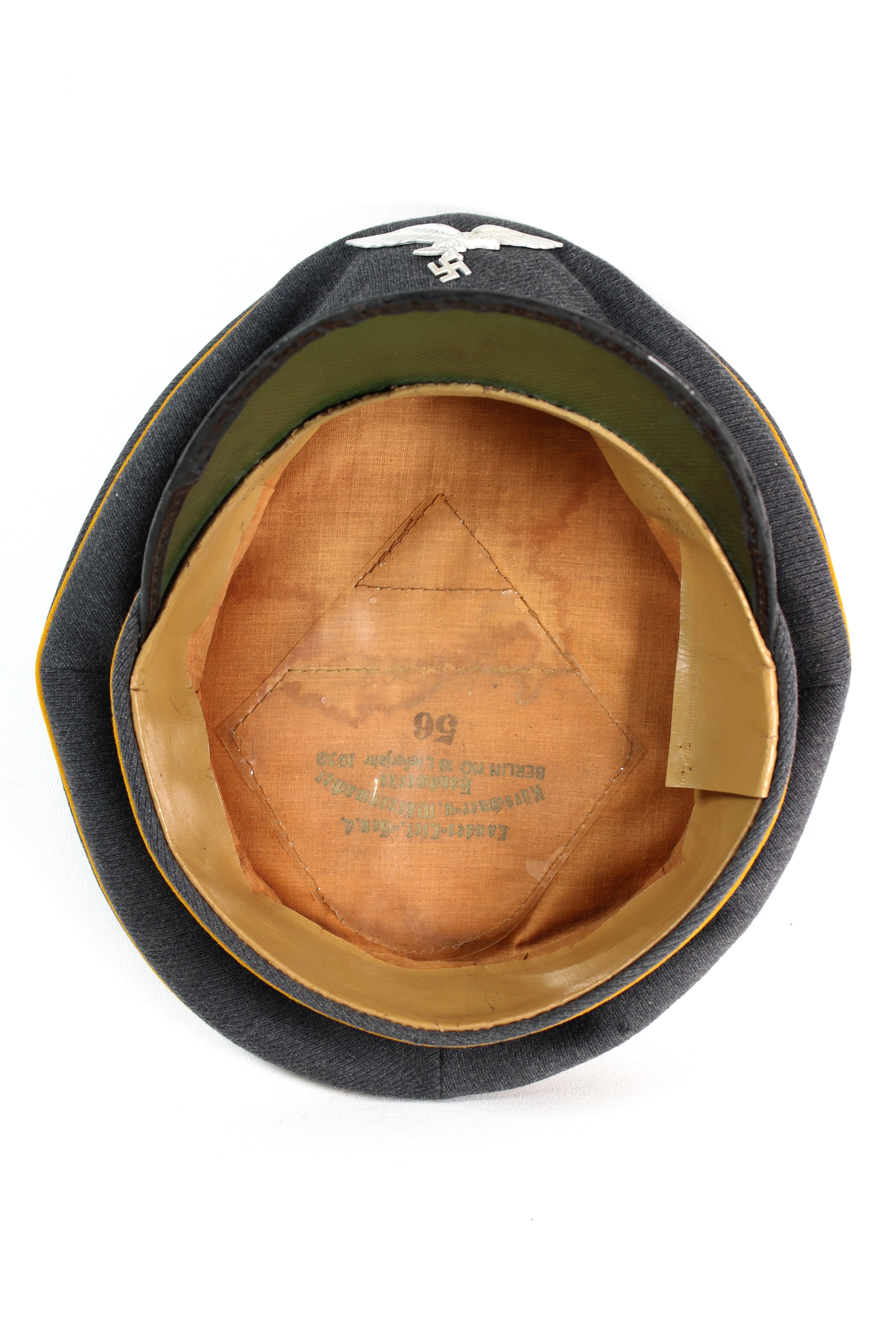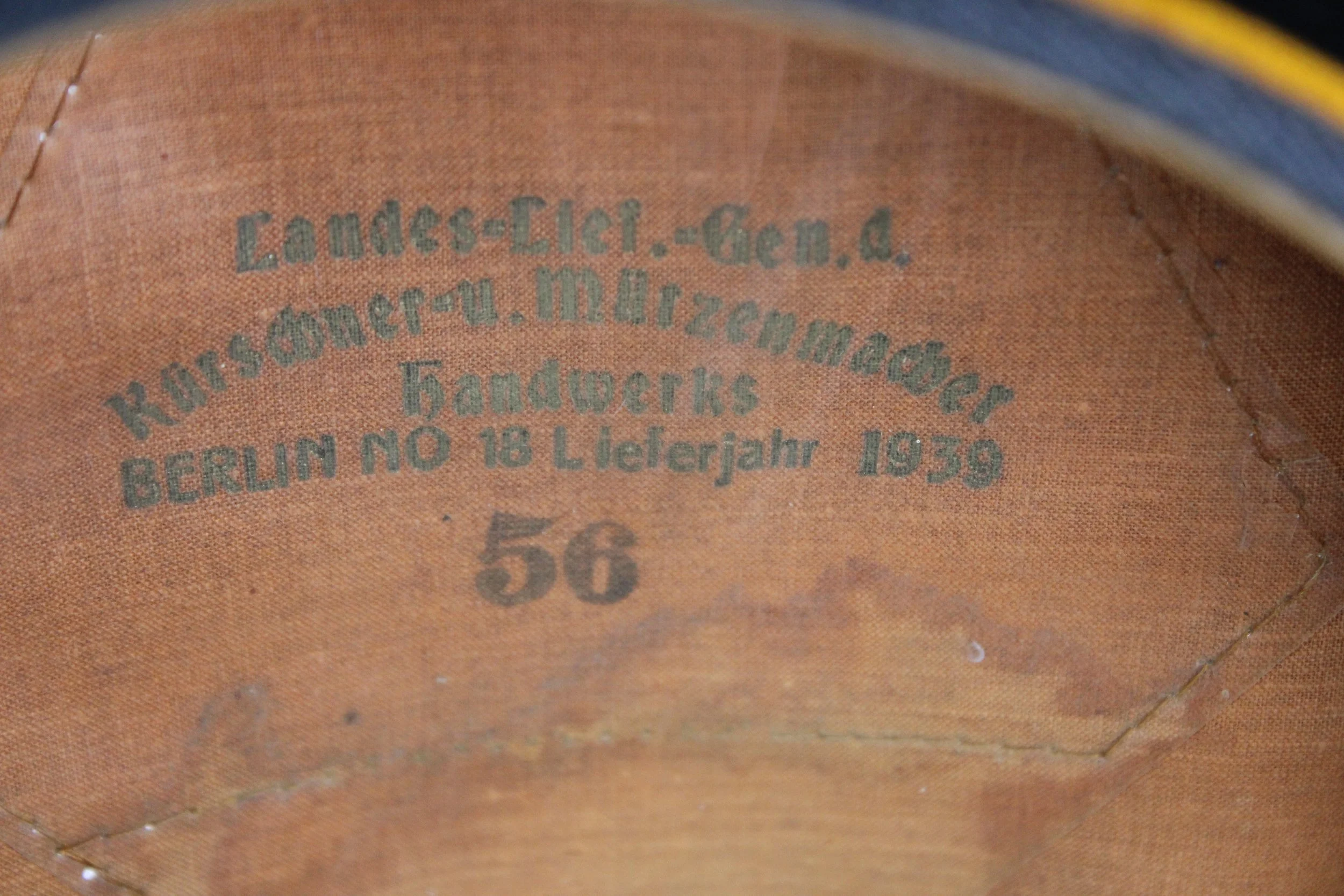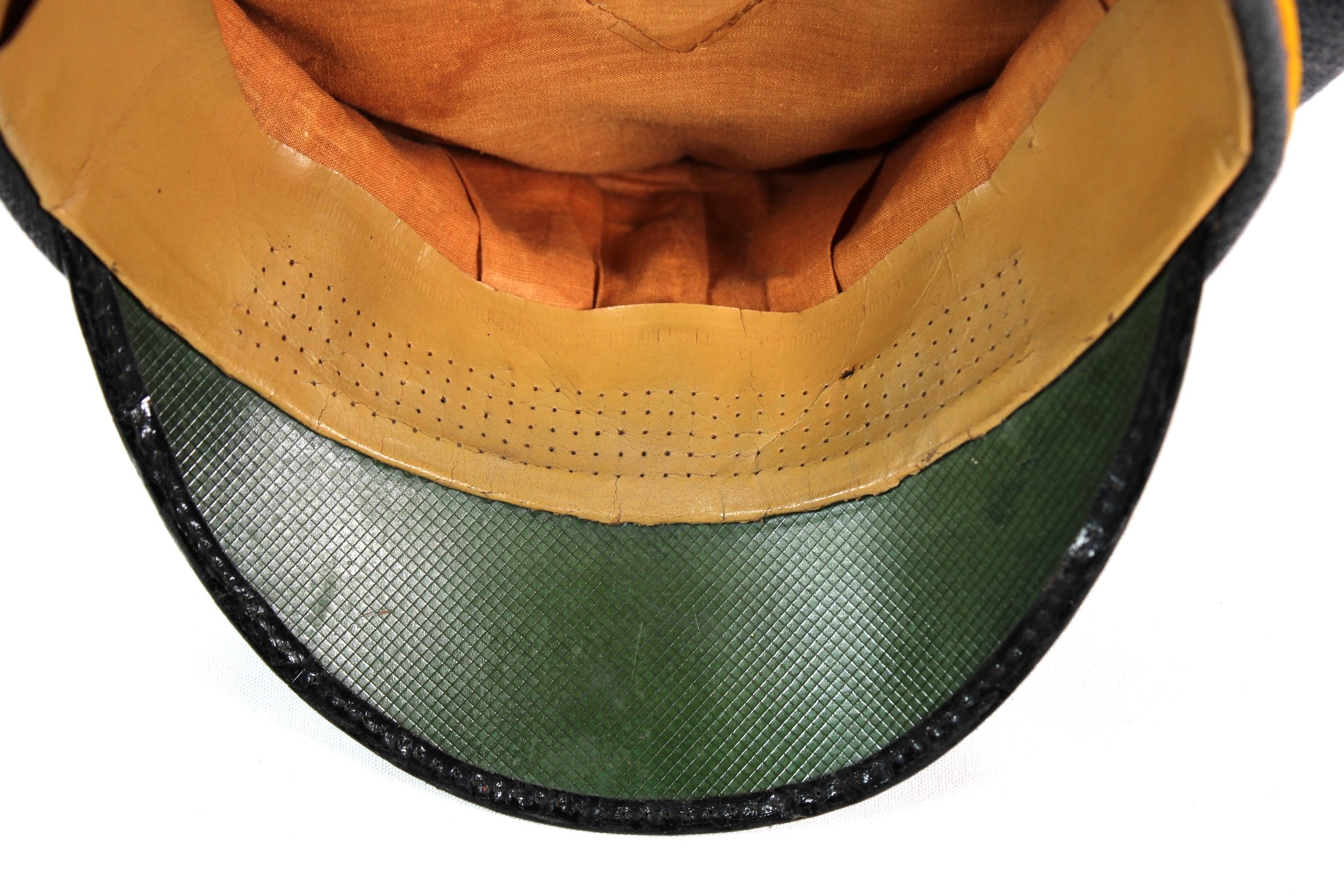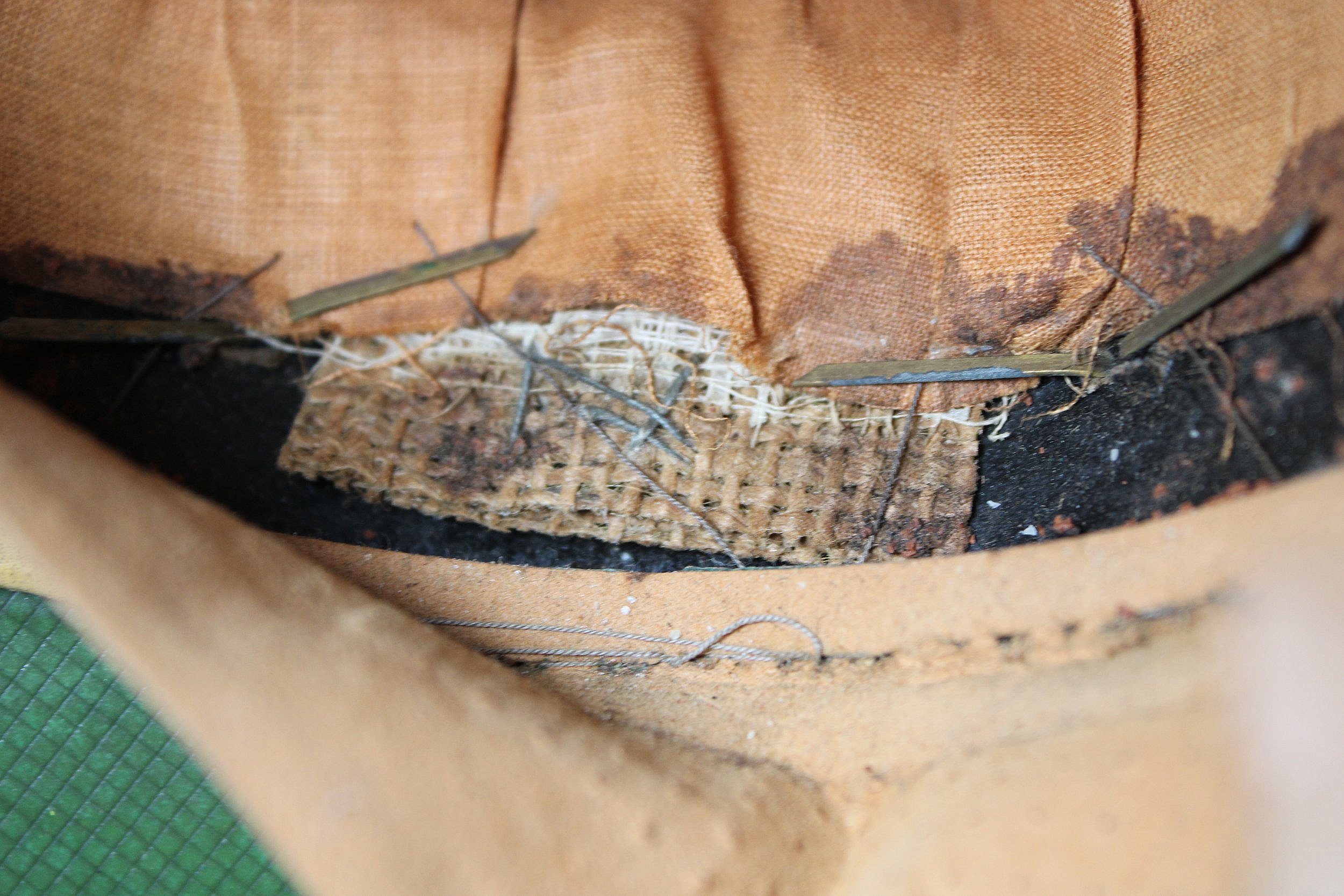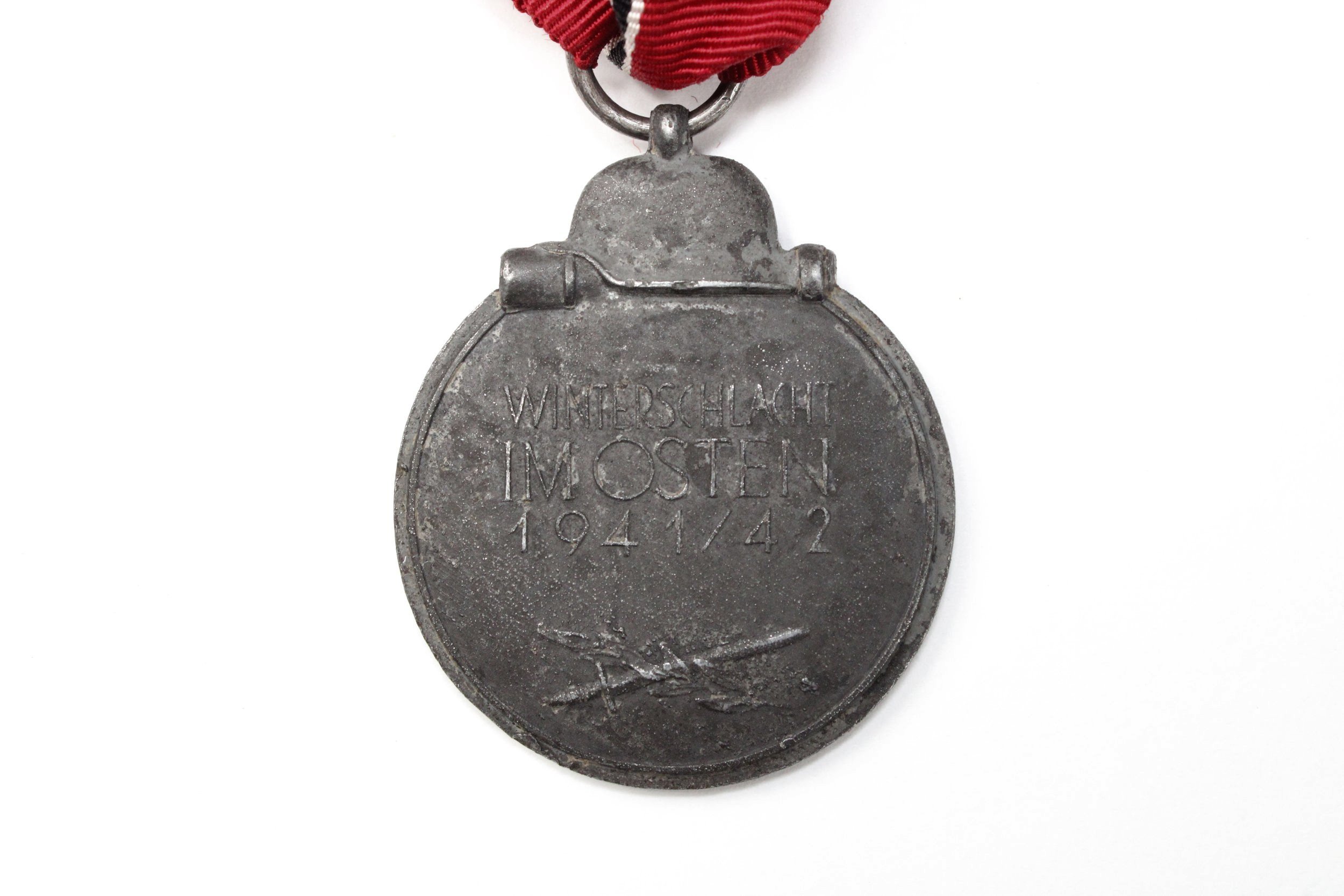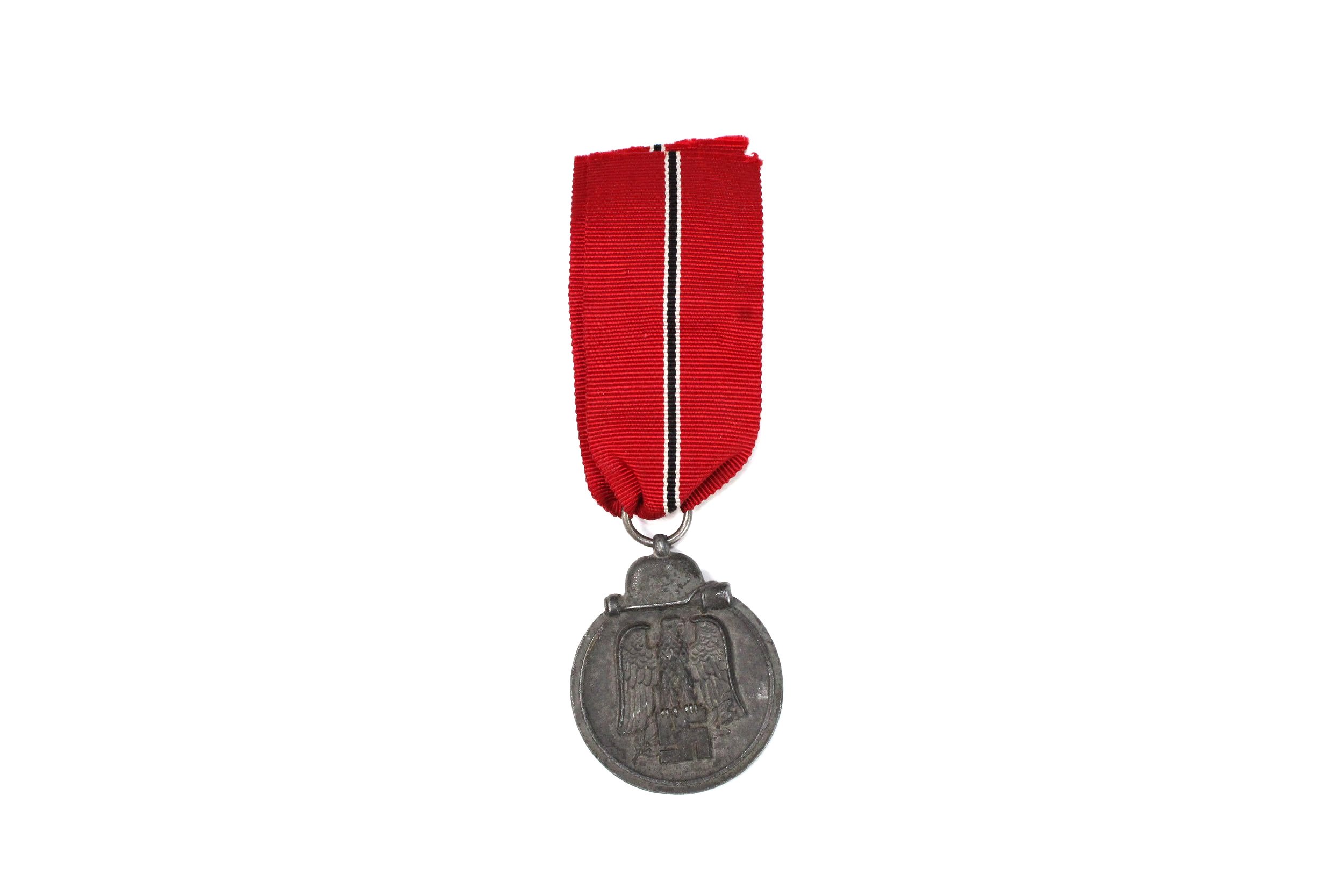 Image 1 of 4
Image 1 of 4

 Image 2 of 4
Image 2 of 4

 Image 3 of 4
Image 3 of 4

 Image 4 of 4
Image 4 of 4





"Smiling Al Alvarez" D-Day Veteran Of the "Big Red One" Unpublished Memoir, Photos and Letter
Included in this lot is a original 1943 photo and some modern copies and photos. A letter from Smiling Al and his unedited memoir of his experience in the Hurtgen Forest.
There are many articles and some video interviews on Al online, He was quite a beloved member of the Veteran community.
War or Conflict: World War II, 1939-1945; Korean War, 1950-1953. Vietnam War, 1961-1975;
Branch of Service: Army
Service Unit/Ship: C Battery, 7th Field Artillery Battalion, 1st Infantry Division; 82nd Airborne Division; 187th Airborne Regimental Combat Team (ARCT); 11th Airborne Division; 7th Special Forces Group; XVIII Airborne Corps
Battles & Campaigns: Normandy; Northern France; Hurtgen Forest; Battle of the Bulge; Ardennes; Central Europe; Rhineland
Location of Service: Fort Dix, New Jersey; Fort Benning, Georgia; Fort Riley, Kansas; Fort Sill, Oklahoma; Fort Bragg, North Carolina; Korea; Germany; Argentina; Dominican Republic; Fort Monmouth, New Jersey; Normandy, France; Belgium; Germany; Czechoslovakia; European Theater; Asia; South America; Dominican Republic; Bolivia; Bolivia; Detroit, Michigan; Baltimore, Maryland; Washington, DC; Atchison, Kansas; Vietnam; Greece; Turkey
Highest Rank: Lieutenant Colonel
Lt. Col. Alfred A. Alvarez landed at Omaha beach, fought in Korea, the Dominican Republic and Vietnam and chased Che Guevara across South America during a lengthy military career. Lt. Col. Alvarez served in the Army for more than 32 years, serving as an enlisted soldier amid World War II and later, as an officer, with time in infantry, artillery and Special Forces units.
"Carpe Diem!"
When Al Alvarez heard the call from the paratroopers of the 197th Texas Army National Guard, he knew this D-Day would be unlike any other.
As a private, Alvarez landed on Omaha Beach on D-Day and after 32 years of service retired a Lt. Col. paratrooper with the 82nd Airborne Division. His career began in 1942 and, two years later, would bring then-Pvt. Alvarez to the shores of France ahead of one of the most famous battles of World War II. Lt. Col. Alvarez was a radio operator with the 7th Field Artillery, part of the 1st Infantry Division, on D-Day — June 6, 1944. In 2014, ahead of the 70th anniversary of the climactic battle, he recalled coming ashore on Omaha Beach.
Lt. Col. Alvarez said that for most of the trip, soldiers could see nothing outside the small amphibious craft inching toward Omaha Beach.“You were getting closer and closer and closer, and the explosions were getting louder and louder and louder,” he said.
The first sign of shore, he said, was the pinging of bullets on the side of the craft and the wave of smoke that quickly engulfed them.
Lt. Col. Alvarez said he made his way to shore by hiding behind whatever obstacle he could find. The water seemed red, he said. The shore was covered in smoke, and snapping bullets filled the air.
“Crawling and dragging our supplies, we emerged and hid behind a mounded row of pebble, sort of a berm, lined with literally hundreds of soldiers lying, facing inland,” he said.
"We were a group of seven and two of us were radio operators," Alvarez remembered. "And one guy got hit in the head and there was blood all over his face, and he said 'Al, stick your hand in my helmet and see what's going on.'"
Alvarez, then a 20-year-old paratrooper, said the explosive atmosphere was like a Hollywood set, until death surrounded him.
"I was not as nervous as a lot of the other guys who were there because I was too young and too stupid to realize what was about to happen," he laughed. "When people started getting hit, I knew it was real."
The next day at low tide, Lt. Col. Alvarez said bodies lined the beach.
He would be part of the team that would serve as forward observers for the 7th Field Artillery and their 105 mm guns. From the beach, the unit would still need to cross a German minefield, “gingerly groping our way up, crawling” and would later help root out snipers and clear enemy pillboxes.
“Getting to the top of that initial bluff now seems miraculous,” Lt. Col. Alvarez said in 2014. “That’s about as far as most of us got.” The 1st Division’s 16th Infantry Regiment lost nearly 1,000 soldiers on that single day, June 6, 1944. Al Alvarez was not one of them.
After World War II, Lt. Col. Alvarez attended airborne school and Officer Candidate School before serving with the 187th Airborne Regimental Combat Team in Korea. He later served in Special Forces and as part of the 82nd Airborne Division, deploying to the Dominican Republic and Vietnam before ending his career in 1974.
He later served as director of personnel for North Carolina regional human resources and as a master planner for Cumberland County. He became involved in the Airborne & Special Operations Museum in its earliest days, first on the board of directors and later as a volunteer.
All passed in 2017.
Included in this lot is a original 1943 photo and some modern copies and photos. A letter from Smiling Al and his unedited memoir of his experience in the Hurtgen Forest.
There are many articles and some video interviews on Al online, He was quite a beloved member of the Veteran community.
War or Conflict: World War II, 1939-1945; Korean War, 1950-1953. Vietnam War, 1961-1975;
Branch of Service: Army
Service Unit/Ship: C Battery, 7th Field Artillery Battalion, 1st Infantry Division; 82nd Airborne Division; 187th Airborne Regimental Combat Team (ARCT); 11th Airborne Division; 7th Special Forces Group; XVIII Airborne Corps
Battles & Campaigns: Normandy; Northern France; Hurtgen Forest; Battle of the Bulge; Ardennes; Central Europe; Rhineland
Location of Service: Fort Dix, New Jersey; Fort Benning, Georgia; Fort Riley, Kansas; Fort Sill, Oklahoma; Fort Bragg, North Carolina; Korea; Germany; Argentina; Dominican Republic; Fort Monmouth, New Jersey; Normandy, France; Belgium; Germany; Czechoslovakia; European Theater; Asia; South America; Dominican Republic; Bolivia; Bolivia; Detroit, Michigan; Baltimore, Maryland; Washington, DC; Atchison, Kansas; Vietnam; Greece; Turkey
Highest Rank: Lieutenant Colonel
Lt. Col. Alfred A. Alvarez landed at Omaha beach, fought in Korea, the Dominican Republic and Vietnam and chased Che Guevara across South America during a lengthy military career. Lt. Col. Alvarez served in the Army for more than 32 years, serving as an enlisted soldier amid World War II and later, as an officer, with time in infantry, artillery and Special Forces units.
"Carpe Diem!"
When Al Alvarez heard the call from the paratroopers of the 197th Texas Army National Guard, he knew this D-Day would be unlike any other.
As a private, Alvarez landed on Omaha Beach on D-Day and after 32 years of service retired a Lt. Col. paratrooper with the 82nd Airborne Division. His career began in 1942 and, two years later, would bring then-Pvt. Alvarez to the shores of France ahead of one of the most famous battles of World War II. Lt. Col. Alvarez was a radio operator with the 7th Field Artillery, part of the 1st Infantry Division, on D-Day — June 6, 1944. In 2014, ahead of the 70th anniversary of the climactic battle, he recalled coming ashore on Omaha Beach.
Lt. Col. Alvarez said that for most of the trip, soldiers could see nothing outside the small amphibious craft inching toward Omaha Beach.“You were getting closer and closer and closer, and the explosions were getting louder and louder and louder,” he said.
The first sign of shore, he said, was the pinging of bullets on the side of the craft and the wave of smoke that quickly engulfed them.
Lt. Col. Alvarez said he made his way to shore by hiding behind whatever obstacle he could find. The water seemed red, he said. The shore was covered in smoke, and snapping bullets filled the air.
“Crawling and dragging our supplies, we emerged and hid behind a mounded row of pebble, sort of a berm, lined with literally hundreds of soldiers lying, facing inland,” he said.
"We were a group of seven and two of us were radio operators," Alvarez remembered. "And one guy got hit in the head and there was blood all over his face, and he said 'Al, stick your hand in my helmet and see what's going on.'"
Alvarez, then a 20-year-old paratrooper, said the explosive atmosphere was like a Hollywood set, until death surrounded him.
"I was not as nervous as a lot of the other guys who were there because I was too young and too stupid to realize what was about to happen," he laughed. "When people started getting hit, I knew it was real."
The next day at low tide, Lt. Col. Alvarez said bodies lined the beach.
He would be part of the team that would serve as forward observers for the 7th Field Artillery and their 105 mm guns. From the beach, the unit would still need to cross a German minefield, “gingerly groping our way up, crawling” and would later help root out snipers and clear enemy pillboxes.
“Getting to the top of that initial bluff now seems miraculous,” Lt. Col. Alvarez said in 2014. “That’s about as far as most of us got.” The 1st Division’s 16th Infantry Regiment lost nearly 1,000 soldiers on that single day, June 6, 1944. Al Alvarez was not one of them.
After World War II, Lt. Col. Alvarez attended airborne school and Officer Candidate School before serving with the 187th Airborne Regimental Combat Team in Korea. He later served in Special Forces and as part of the 82nd Airborne Division, deploying to the Dominican Republic and Vietnam before ending his career in 1974.
He later served as director of personnel for North Carolina regional human resources and as a master planner for Cumberland County. He became involved in the Airborne & Special Operations Museum in its earliest days, first on the board of directors and later as a volunteer.
All passed in 2017.


